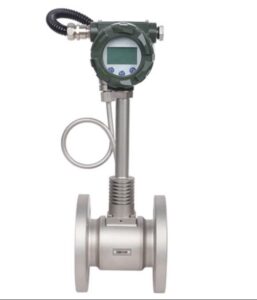Implementing micro-influencer campaigns tailored for niche audiences requires a meticulous and data-driven approach. Unlike broad-scale influencer marketing, niche campaigns demand precision in influencer selection, content authenticity, technical setup, and ongoing optimization. This guide provides expert-level, actionable insights to help marketers craft and execute micro-influencer strategies that resonate deeply within specialized communities, leveraging technical tools, nuanced outreach tactics, and detailed performance tracking.
Table of Contents
- Selecting the Right Micro-Influencers for Niche Audiences
- Designing a Targeted Outreach and Collaboration Strategy
- Creating Authentic and Niche-Specific Content with Micro-Influencers
- Technical Implementation: Campaign Setup and Tracking
- Optimization Tactics for Niche Audience Engagement
- Common Pitfalls and How to Avoid Them
- Final Reinforcement: Delivering Value and Connecting Back to the Broader Strategy
1. Selecting the Right Micro-Influencers for Niche Audiences
a) Criteria for Identifying Authentic and Relevant Micro-Influencers
Start with defining your niche’s core interests, values, and community language. Authenticity and relevance are paramount; look for influencers whose personal brand and content naturally align with these elements. Use a combination of:
- Content Consistency: Their posts should consistently reflect niche-specific themes (e.g., eco-friendly living, niche hobbyist communities).
- Audience Engagement Quality: Prioritize genuine interactions—comments, DMs, community replies—over follower counts.
- Personal Voice: Influencers who speak in a tone and style that resonates with your target demographic.
“Authenticity and relevance trump sheer follower numbers. Micro-influencers with engaged, niche audiences can generate higher ROI.”
b) Tools and Platforms for Micro-Influencer Discovery and Vetting
Use specialized platforms that filter influencers based on niche keywords, engagement metrics, and audience demographics. Top tools include:
| Platform | Key Features |
|---|---|
| Heepsy | Niche filtering, audience analysis, authenticity scoring |
| BuzzSumo | Content analysis, influencer discovery by topic |
| NinjaOutreach | CRM features, outreach automation, detailed vetting |
c) Analyzing Engagement Metrics and Audience Quality over Follower Count
Prioritize engagement rate (likes, comments, shares relative to followers) over raw follower count. Use the Engagement/Followers Ratio:
| Metric | Why It Matters |
|---|---|
| Engagement Rate | Indicates active, interested community |
| Audience Authenticity | Check for engagement pods, fake followers via tools like Social Blade |
| Content Relevance | Review recent posts for niche alignment |
d) Case Study: Successful Niche Micro-Influencer Selection Process
For a niche eco-friendly skincare brand, a structured process was employed:
- Defined specific keywords: “sustainable beauty,” “zero waste skincare,” “organic ingredients.”
- Used Heepsy filters for influencers with 5K–15K followers, >4% engagement rate, and recent niche-related posts.
- Vet influencers through profile reviews, audience analysis reports, and sample outreach.
- Final selection focused on authentic voices with demonstrable passion for sustainability, resulting in a 30% higher engagement rate than broader influencer pools.
2. Designing a Targeted Outreach and Collaboration Strategy
a) Crafting Personalized and Compelling Outreach Messages
Effective outreach hinges on personalization. Use detailed insights from their content and audience to craft messages with:
- Specific References: Mention recent posts, shared values, or community activities.
- Value Proposition: Clearly articulate what’s in it for them—exclusive products, early access, or meaningful partnership.
- Authentic Voice: Match your tone to their style—informal for lifestyle micro-influencers, professional for industry experts.
“A personalized message that demonstrates genuine understanding increases response rates by over 50%.”
b) Approaches for Building Long-Term Partnerships versus One-Time Campaigns
Long-term collaborations foster trust and content consistency. Use a phased approach:
- Initial Engagement: Start with small collaborations—product reviews or stories.
- Relationship Nurturing: Regular check-ins, sharing exclusive insights, and collaborative brainstorming sessions.
- Scaling: Co-create campaigns, events, or product lines aligned with both brands’ missions.
c) Negotiating Compensation and Deliverables for Niche Micro-Influencers
Negotiate transparently based on:
- Influencer’s Reach and Engagement: Use industry benchmarks—$50–$200 per micro-post for 5K–15K followers.
- Content Type and Usage Rights: Clarify if content will be repurposed, how many revisions, and exclusivity clauses.
- Performance Bonuses: Consider incentives tied to engagement or conversions.
d) Practical Example: Outreach Workflow and Email Templates
Implement a systematic workflow:
- Identify potential influencers using vetting tools.
- Initial Contact: Send personalized email referencing specific content, e.g., “Loved your recent post on zero waste routines…”
- Follow-Up: If no response in 5 days, send a gentle reminder emphasizing mutual benefits.
- Negotiation: Discuss deliverables, timeline, and compensation in a dedicated call or message thread.
Sample outreach email snippet:
Subject: Collaboration Opportunity with [Brand Name] Hi [Influencer Name], I’ve been following your content on sustainable living—your recent post on composting was inspiring. We’re launching a new eco-friendly skincare line and believe your voice aligns perfectly with our mission. Would you be interested in exploring a collaboration? Best, [Your Name]
3. Creating Authentic and Niche-Specific Content with Micro-Influencers
a) Co-Developing Content Ideas that Align with Both Brand and Influencer Voice
Collaborate through structured brainstorming sessions:
- Pre-Workshop Preparation: Analyze influencer’s top-performing content.
- Joint Ideation: Use frameworks like the “Content Pyramid”—core message, supporting visuals, call-to-action.
- Feedback Loops: Share drafts early, incorporate influencer’s authentic style, and ensure alignment with niche themes.
b) Technical Guidelines for Content Formats (Stories, Reels, Blog Posts, etc.)
Provide clear technical specs:
| Format | Specifications |
|---|---|
| Instagram Story | 1080×1920 px, 15 sec max per slide, swipe-up link if applicable |
| Reel | 1080×1920 px, 15–60 sec, vertical format, include captions |
| Blog Post | Minimum 300 words, SEO optimized, include images and links |
c) Ensuring Content Resonates with the Niche Audience (Language, Symbols, Themes)
Create a detailed brand style guide for influencers:
- Language: Use niche-specific jargon, avoid overly promotional tone.
- Symbols & Visuals: Incorporate community symbols, colors, or motifs familiar to the audience.
- Themes: Focus on values like sustainability, craftsmanship, or innovation, depending on niche.
d) Example: Step-by-Step Content Creation Collaboration
Implement a clear process:
- Kickoff Meeting: Align on key messages, campaign goals, and content themes.
- Draft Submission: Influencer submits initial drafts for review—use shared folders or project management tools.
- Feedback & Revisions: Provide specific, actionable feedback—e.g., “Add a caption emphasizing eco-conscious sourcing.”
- Final Approval & Publishing: Confirm content meets criteria, schedule posts, and monitor live engagement.
4. Technical Implementation: Campaign Setup and Tracking
a) Setting Clear, Measurable Goals and KPIs for Niche Engagement
Define specific objectives:
- Engagement Rate Target: e.g., >5% on all influencer posts.
- Traffic Metrics: Clicks via unique links or UTM parameters.
- Conversion Goals: Sign-ups








